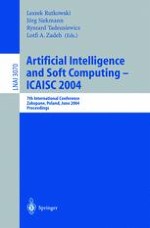2004 | Book
Artificial Intelligence and Soft Computing - ICAISC 2004
7th International Conference, Zakopane, Poland, June 7-11, 2004. Proceedings
Editors: Leszek Rutkowski, Jörg H. Siekmann, Ryszard Tadeusiewicz, Lotfi A. Zadeh
Publisher: Springer Berlin Heidelberg
Book Series : Lecture Notes in Computer Science
Included in: Professional Book Archive
